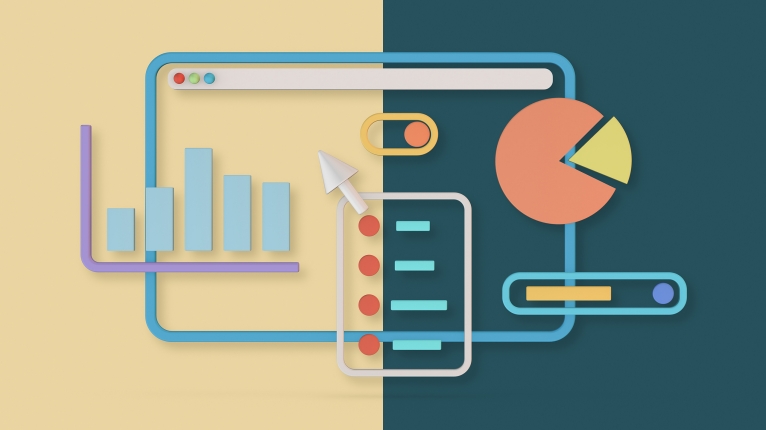Say you want to start setting aside some funds for your child’s future. Maybe it's for their education, their first car or perhaps just a financial head start in adulthood.
However, your child is too young to manage money, and opening an account solely under their name isn’t an option.
This is where a custodial account comes in handy – it’s a practical, flexible way to save or invest money on behalf of a minor.
But how do custodial accounts work, and when might they be the best option for your family’s financial goals? We’ll talk about all this and more as we break down custodial accounts, their advantages and drawbacks, and how they compare to other options, like trusts or 529 plans.
A custodial account is a financial account established by an adult for the benefit of a minor, who is the owner. This type of account holds assets – such as cash, stocks or other investments – with the account’s custodian managing the funds.
While the custodian (often the account creator) makes the investment and spending decisions, these choices must be made exclusively for the beneficiary’s best interests.
A few key features and benefits of custodial accounts are as follows:
- Managed by an adult: The custodian oversees the funds, ensuring they’re invested and used responsibly.
- Belongs to the child: All the assets within the account legally belong to the minor. Once they reach the age of majority (18 to 25, depending on the state), full ownership and decision-making transfer to them.
- Flexible investment options: Funds can be invested in various financial assets – including cash, stocks, bonds, mutual funds or even property – depending on the account type.
While custodial accounts offer flexibility and simplicity, they come with unique considerations, particularly concerning taxes and financial aid to fund higher education costs.
Why open a custodial account?
Custodial accounts have clear advantages for families looking to save for a child’s future. Here are some benefits:
- Ease of setup: Custodial accounts don’t require complicated legal arrangements, making them quicker to open compared to a formal trust.
- Financial flexibility: Funds can be used for nearly any purpose benefiting the child, from educational costs to hobbies, sports or travel.
- Teaching opportunities: Parents and grandparents can use these accounts to introduce young beneficiaries to the foundations of saving and investing responsibly.
That said, there are some drawbacks, namely:
- Loss of control once child reaches adulthood: Once the minor reaches adulthood, they have unrestricted access to the account, no matter what the original intentions for the funds were.
- Impact on financial aid for higher education: These accounts count as assets owned by the student in financial aid calculations. This could reduce their aid eligibility, limiting their ability to access federal student loan programs.
- Tax exposure: While in 2025 the first $2,700 of unearned income (dividends or interest) is taxed at lower rates, higher earnings are taxed at the custodian's marginal rate under the “kiddie tax" rules.
There are three primary types of custodial accounts, each designed to meet different financial goals and needs.
Uniform Transfer to Minors Act (UTMA)
UTMA accounts allow for broader contributions, including cash, securities and even physical property – like real estate. They’re ideal for those looking to manage a diverse range of assets for a minor.
These are available in all U.S. states, except Vermont and South Carolina, and the contribution is unlimited – although gifts above $19,000 (the threshold in 2025) can trigger an obligation to file a gift tax return., The ownership transfer age varies by state but is typically 18 to 25.
Uniform Gifts to Minors Act (UGMA)
UGMA accounts are slightly narrower, only permitting cash and financial securities as contributions.
These are available, however, in all 50 states and have unlimited contribution limits with similar tax implications as UTMA accounts. The ownership transfer age is typically 18 or 21, depending on the state.
529 plans are accounts designed specifically as a vehicle for education savings. They can be both custodial or individual accounts, and they offer tax-free growth and tax-free withdrawals when funds are used for qualified education expenses, like tuition or books. Also, many states offer tax deductions or credits against state income taxes for 529 contributions.
Custodial accounts tend to offer more flexibility than 529 plans. They can be used for any expense that benefits the child, whether it’s for college, a car or a first apartment. But they lack the tax advantages of a 529 plan and are subject to the “kiddie tax” rules mentioned earlier.
There are also ownership differences to consider. Custodial accounts are owned by minor while with 529s, minors are the beneficiaries.
In many cases, a blended approach might work best – using a 529 for education and a custodial account for everything else.
A Coverdell Education Savings Account (ESA) vs. a custodial account
These accounts, though technically not custodial accounts, are often grouped into similar conversations because they hold assets for minors. Coverdell ESAs specifically target education expenses, and they come with additional rules.
The contribution limit is much smaller, capped at $2,000 per child per year, and earnings must be used for qualifying educational expenses. Unused funds are distributed and taxed when the beneficiary turns 30, unless special circumstances apply.
Once established, a custodial account allows the custodian to deposit, manage and spend funds to meet the minor’s best interests. Investments can range from cash savings to stocks, bonds or mutual funds.
Custodians are responsible for keeping detailed records of transactions and account-funded expenditures. They must also act in accordance with “fiduciary duty,” making sure all of their actions benefit the child.
Upon the minor reaching the age of majority, the account transitions to their ownership. At this point, the custodian’s responsibilities end, and the minor gains full control of the funds, using them as they see fit.
What is the difference between a custodial account and a trust?
While both custodial accounts and trusts serve the purpose of holding assets for minors, they differ significantly in terms of complexity, cost and flexibility.
Custodial accounts offer a straightforward approach to managing funds on behalf of a minor, but the custodian relinquish control once the recipient reaches adulthood.
Trusts, on the other hand, offer more long-term control. For example, trust agreements can outline specific conditions for when and how beneficiaries can use funds, even into their adult years.
However, trusts require legal assistance to establish and involve ongoing administrative oversight, making them a more expensive and complex option.
What happens to assets in a custodial account if the custodian or donor dies?
Because custodial accounts are governed by the UTMA or UGMA, the laws specify that the account and all of its assets belong to the child (the beneficiary).
If the donor – the person who originally contributed the assets – passes away, the assets remain in the account and continue benefiting the child as planned.
However, if the custodian – the individual managing the account – dies, the backup custodians named at the account’s creation would normally step in as custodian. However, if you don’t have a documented backup plan, the court or other governing entity may appoint a new custodian. This could inject unnecessary legal complexity for your family.
What is the annual exclusion?
Transfers to custodial accounts are considered gifts to the beneficiary, and there are guidelines regarding the amounts that can be gifted without tax implications. This amount is known as the annual exclusion as part of the federal gift tax.
In 2025, a parent can individually give each child up to $19,000 per year, or $38,000 if given by a couple. Grandparents can provide those amounts to each of their individual children and grandchildren each year as well.
It's important to note that while you can contribute to a custodial account exceeding the annual exclusion, the amount over the exclusion will utilize some of your lifetime gift and estate tax exemption ($13.99 million per person in 2025).
Typically, individuals tend to give to custodial accounts within the limits of the annual exclusion and utilize trusts for larger gifts.
If the donor of the account also acts as the custodian, the balance of the custodial account will be included in the donor's estate upon their death. This presents a risk, particularly for parents who act as custodians and who have a taxable estate (over $13.99 million in 2025, or $27.98 million for a married couple).
It’s an even greater concern for grandparents. Therefore, the general advice is that grandparents shouldn’t serve as custodians of accounts they are funding.
Do I have to pay taxes on a custodial account?
Taxes, unfortunately, are an unavoidable aspect of any taxable investment account, including custodial accounts. However, what sets custodial accounts apart is how they’re taxed and who’s ultimately responsible for those taxes.
Income generated by a custodial account, such as dividends from stocks or interest from savings, is considered the child’s income.
However, because children typically have lower incomes, taxes on this income are often significantly lower than they would be for an adult. That being said, the "kiddie tax," as mentioned earlier, comes into play here.
With the kiddie tax, a child’s unearned income above a certain threshold is taxed at their parent’s tax rate. For 2025, that number is $2,700, up from $2,500 in 2024 to reflect inflation.
Can you change the custodian on an UTMA account?
To change the custodian on an UTMA account or any other custodial account, you’ll likely need to fill out a form at your bank or broker with the current and new custodian.
Alternatively, if the current custodian has passed away, you’ll need to provide a death certificate or other official court documents stating why the custodian must change.
Federal financial aid calculations treat parental and student assets differently, and custodial accounts fall under the category of student assets.
Why does this matter? Because federal financial aid forms, like the FAFSA, weigh student assets more heavily than parental ones when determining how much a family can contribute to college costs.
Specifically, student assets are assessed at a rate of 20%, while parental assets are assessed at a much lower rate of 5.64%.
This means if your child has substantial savings in a custodial account, this could reduce their eligibility for need-based financial aid.
If you’re not sure whether the type of account you have is a custodial account, there are a few ways to find out.
First, check account names. Custodial accounts will often include the child’s name, followed by the custodian’s name and a reference to "UTMA" or "UGMA."
Second, review the age restrictions tied to the account. Custodial accounts typically transfer control to the beneficiary when they reach the age of majority – 18 to 25, depending on your state. If the account mentions an age at which the child assumes ownership rights, it’s a custodial account.
Wondering how old your child needs to be to open a custodial account? There’s good news – the account can be set up as soon as your child is born. However, contribution limits depend on the type and source of funds.
While there’s no hard cap, keep in mind that any gift exceeding $19,000 annually (as of 2025) may require the donor to file a gift tax return.
In many cases, the easiest way to open a custodial account is online or at a physical bank location. You just need the child’s name, birthdate and Social Security number.
While the person you’re opening it for must be a minor (under the age of 18), the account can be opened by a parent, grandparent, guardian or even family friend – basically, anyone who’s an adult.
Once you’ve created the account, you’ll need to fund it with an initial deposit. That’s all there is to it!
Custodial accounts bridge the gap between saving for a minor’s future and maintaining some control over the funds. They’re an approachable option for families looking to teach financial responsibility while simplifying wealth transfers.
However, they aren’t the perfect solution for every situation. If long-term control or specific usage parameters are priorities, options like trusts or 529 plans may be better suited to your needs. And in some cases an overfunded custodial account could provide a young adult with more money than their parents are comfortable with – although by the time that happens there’s very little the parents can do about it as the young adult will be the owner, not the parents.
Consider your goals and speak with a financial advisor and a qualified attorney to weigh the best solution for your family’s unique situation.










